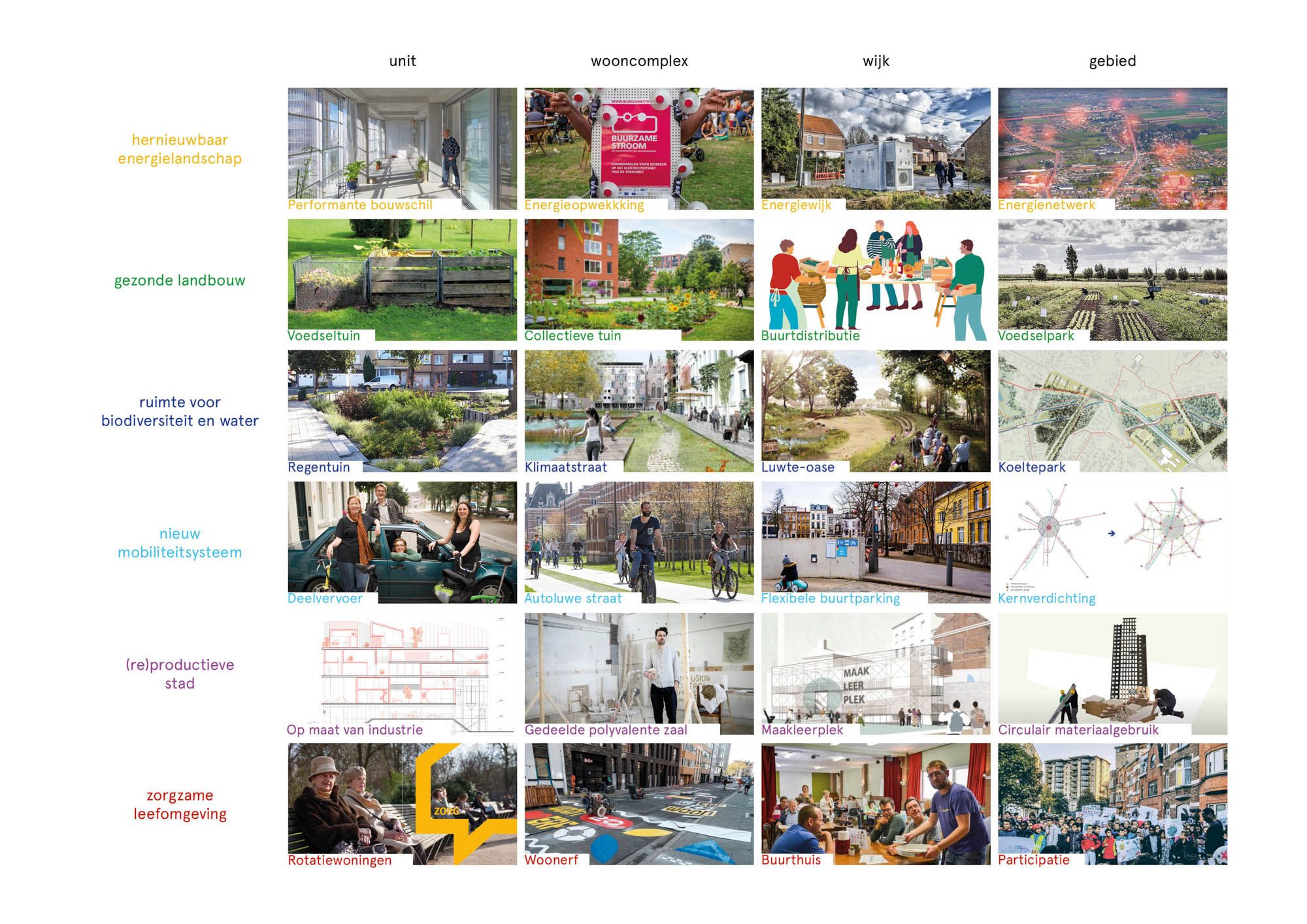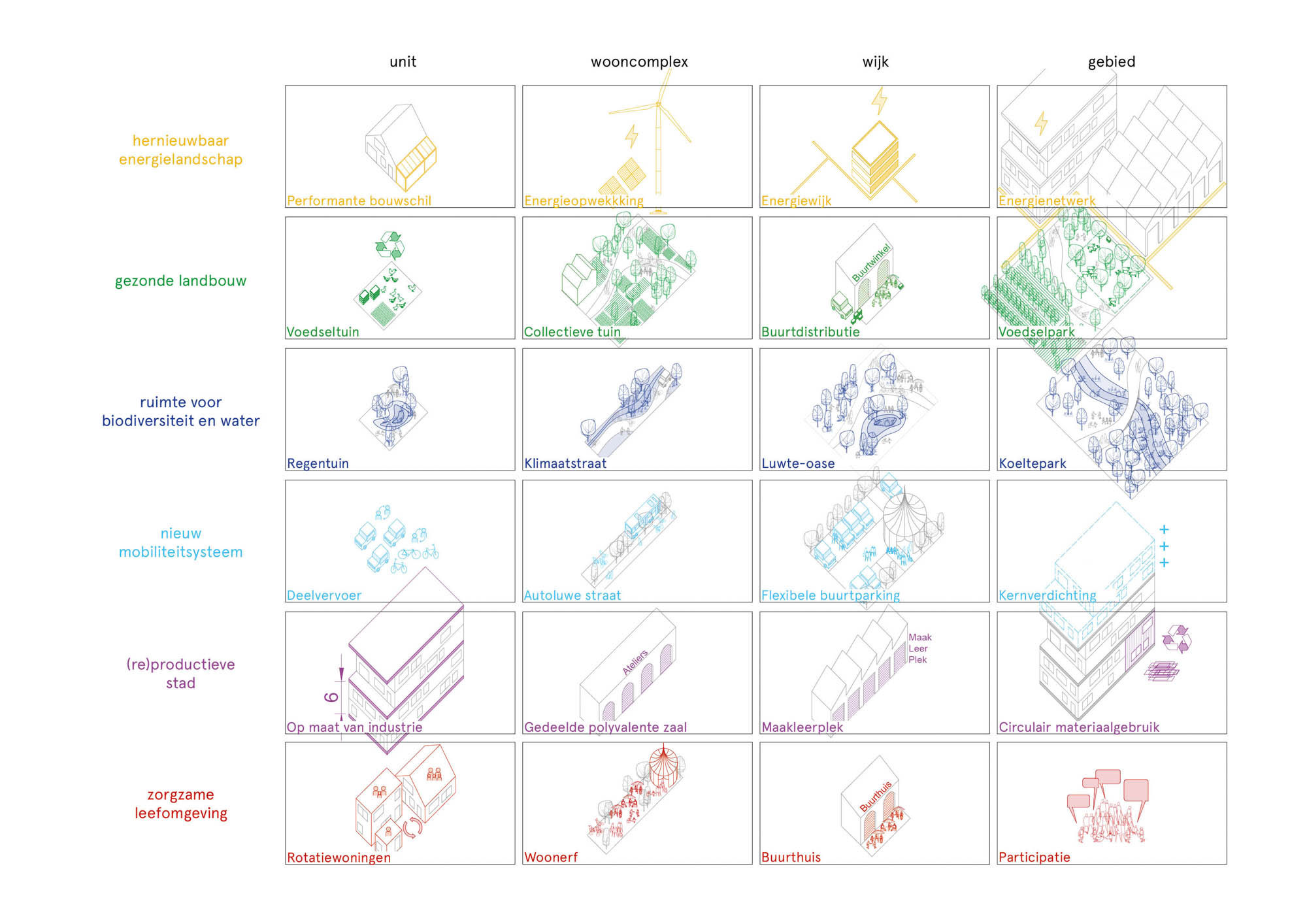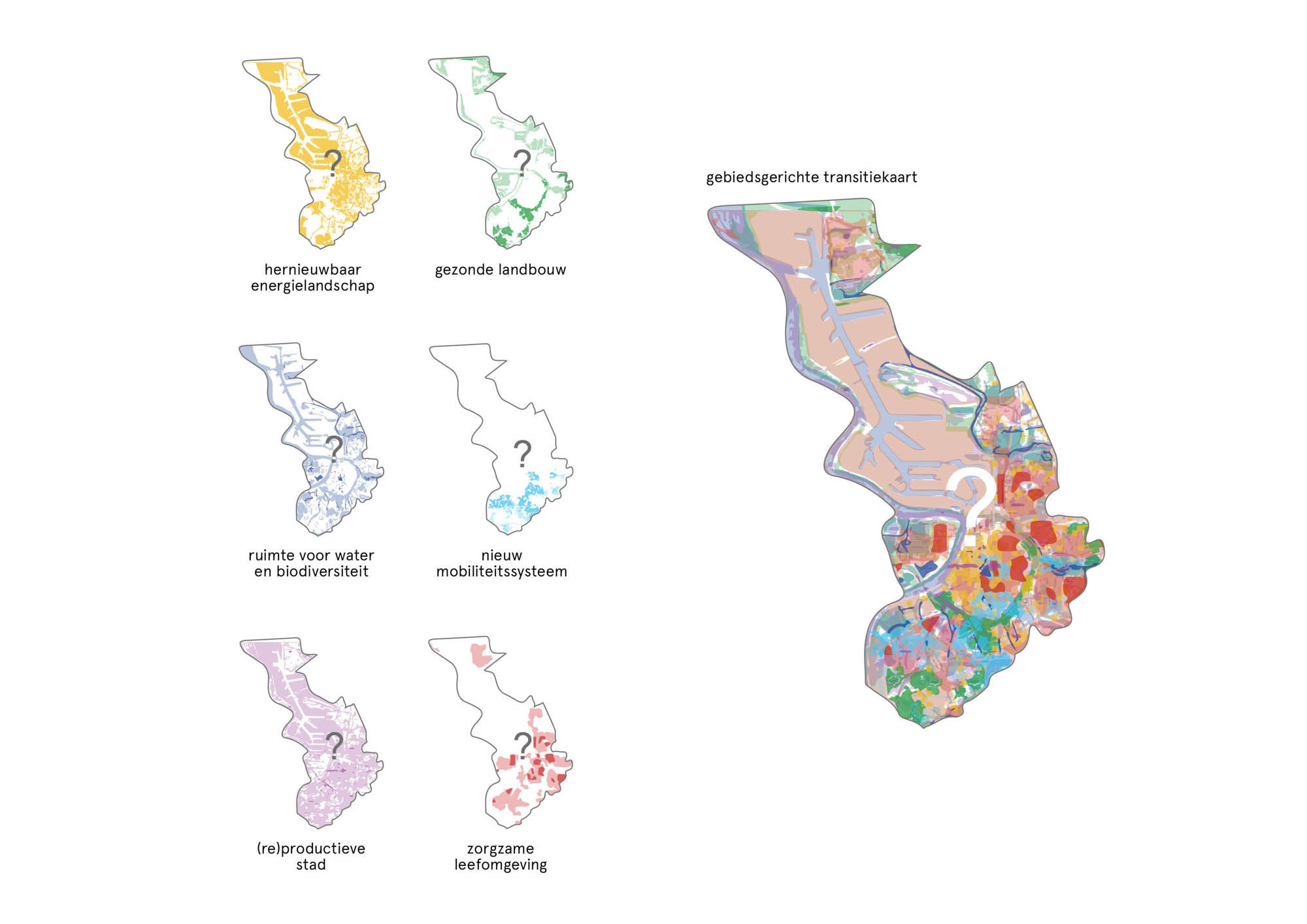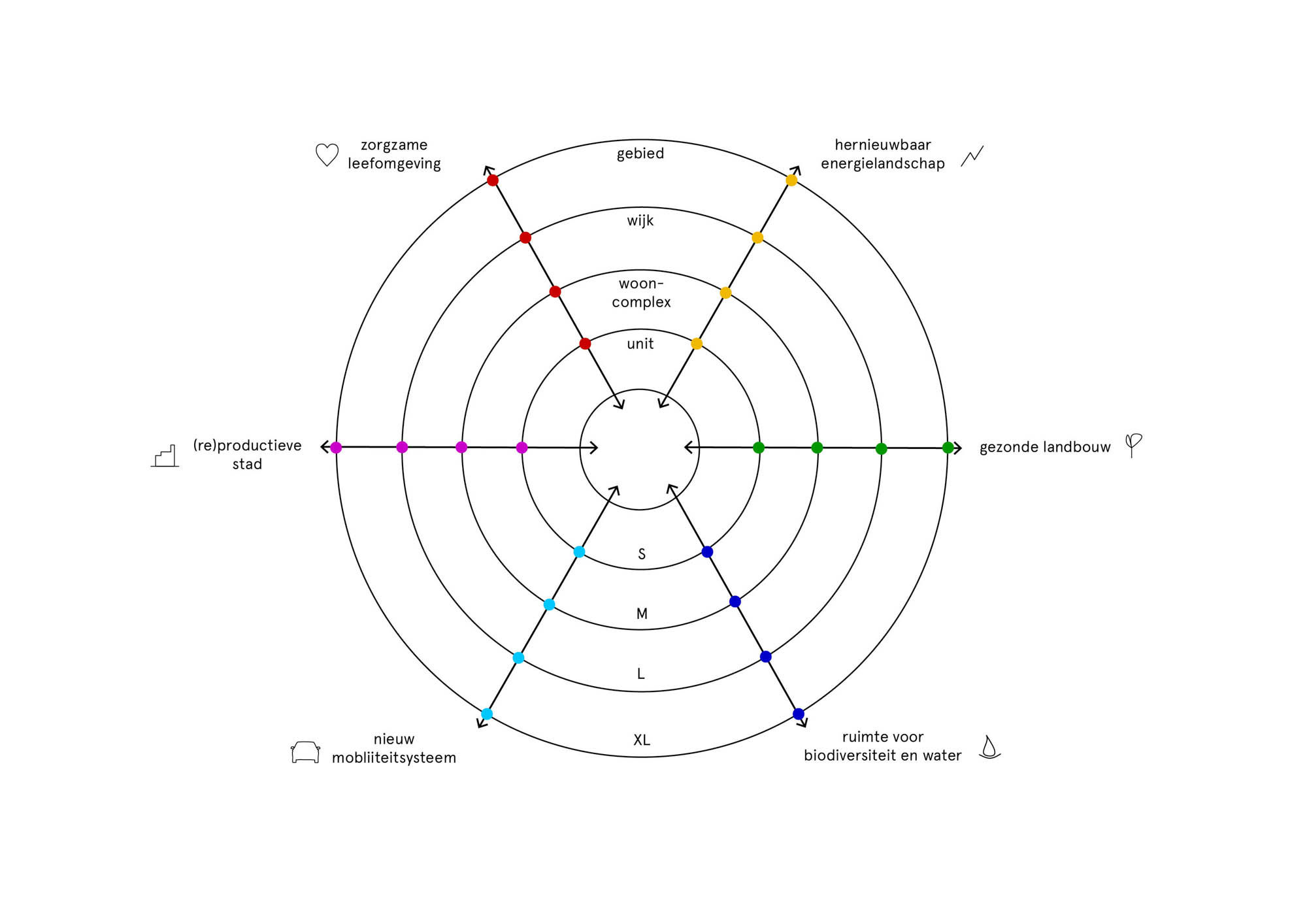In association with Robbrecht en Daem architecten, and at the invitation of the project developer Triple Living, we conducted a study of the housing issue in Flanders. This first exploration of a future-oriented and systemic approach to a qualitative and affordable housing policy focuses on the situation in Antwerp.




Flanders is struggling with a major housing problem. Matching the housing stock to the demand for housing does not appear to be a straightforward matter. This becomes clear when we compare the policy strategies of the main Flemish cities. They differ greatly, both in terms of their ambitions on the scale of the city as a whole and in the regulations at the smallest scale, such as the surface area norms for bedrooms.
Observations
In the 'Qualitative and feasible housing model' study, we map out the housing issue based on four 'observations'. In the first observation, we describe how cities are attempting to address today's major transition tasks - related to energy, care, mobility, biodiversity, water, and so on - in the space. We are faced with the task of providing highly specific answers to all these issues in every new housing project, from small renovations to large area developments. The second observation explains the phenomenon of urban flight and the various reasons why households move to the outskirts of the city. Thirdly, we zoom in on the complex process of area development and describe the diversity of actors involved. In the fourth observation, we map out the variation of surface area norms between different cities and European countries.
Mismatches
Building on the four observations, we formulated three mismatches. Firstly, we note that it is not always easy to translate long-term goals into local initiatives. Many documents outlining ambitions have not yet been translated into concrete action. The many experiments and initiatives do not yet add up to a fundamental shift.
Secondly, it turns out that the generic norms are not directly applicable to the diversity of contexts. A generic application of the regulations inevitably means that space is used inefficiently in some places. Apart from the inefficient use of space, the accumulation of norms leads to developments that are no longer feasible or affordable.
Thirdly, a housing stock that does not match housing needs results in urban flight. Today, surface area norms are a crucial element in ensuring the quality of housing. Yet it is an extremely subjective measure. This is evident when we compare the norms in different cities. It is very difficult to guarantee the quality of life solely on the basis of such norms. Urban flight is not only related to the size of housing, but also to the living environment, affordability and housing typology.
Systemic housing strategy
In response to these mismatches, we propose a more effective and systemic housing strategy. To illustrate it we focus on the situation in Antwerp. We formulate assessment frameworks on three scales. At the scale of the city we need to prioritise where and how we are going to respond to today's major transitions. In order to be able to anticipate all these transitions in a timely manner in relation to new housing developments, we have drawn up an 'area-specific transition map'. Area-based measures allow us to better address local needs and opportunities. During the study, we only explored the methodology. The actual elaboration of such an area-specific map is a task in itself and could be carried out - focusing on Antwerp - when the strategic Spatial Structure Plan is drafted.
We also put together a toolbox for strategic area development. A toolbox is a package of measures with building blocks that bring together the various transitions in an integrated manner, while at the same time offering sufficient flexibility to adapt to local characteristics. In order for the various transitions to take place on the ground, new types of cooperation models are
needed that link private and public actors. The elaboration of the toolbox and cooperation models will be part of the follow-up process.
Finally, we have to devote attention to the architectural development of a project. In addition to quantitative norms, qualitative housing strategies can help to connect the housing needs of city dwellers with the spatial translation of the transitions. An assessment framework based on housing strategies can guide urban policy in this regard.
This study forms an exploration and not an end point. It provides the basis for an open discussion between the various parties currently working on housing and area developments from different perspectives and in different roles.